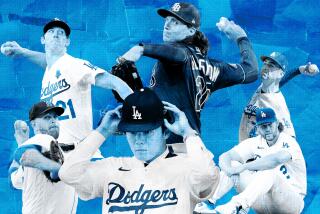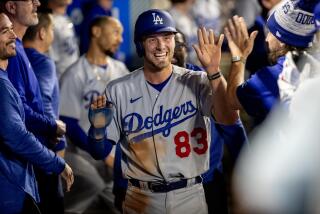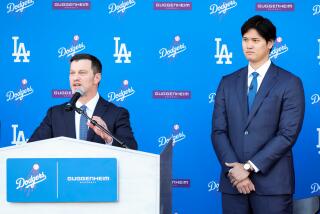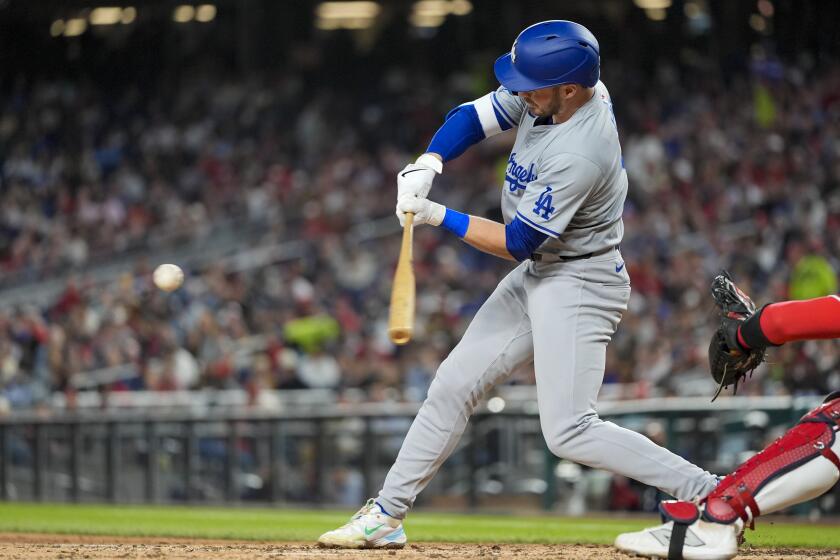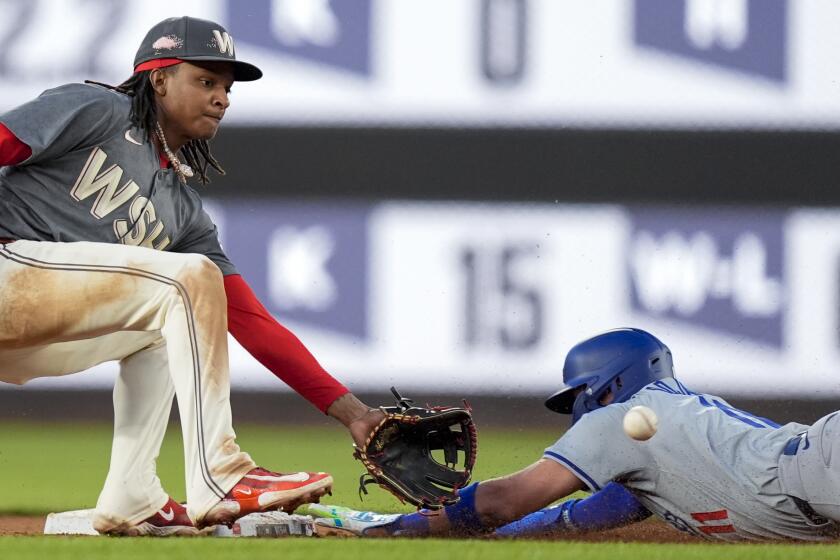Could Cardinals’ system be the solution for Dodgers?

BOSTON — The headline news was that Don Mattingly publicly told the Dodgers’ owners that dating had gone on long enough. He told them to commit to him as their manager or else, and he took the risk of a nasty breakup.
In other news Monday, the Dodgers dropped $28 million on a guy who never has played in the major leagues. It worked with Yasiel Puig and Hyun-Jin Ryu, each at greater cost, so the Dodgers get the benefit of the doubt on Cuban second baseman Alexander Guerrero.
Within the baseball world, the Dodgers’ latest cash outlay prompted a few snickers about the team’s supposed transformation into a player-development machine, and the spending restraint that would go along with it.
The Dodgers were just knocked out of the playoffs by baseball’s truest player-development machine, the St. Louis Cardinals.
“I think they are a model organization,” Dodgers President Stan Kasten said.
Of the 25 players on the National League Championship Series rosters, the Cardinals drafted 17 and the Dodgers five. That statistic might be misleading — the Dodgers’ player-development system had been devastated under former owner Frank McCourt, and a home-grown major league team this season might have finished in last place — but another statistic might not be.
Since their World Series championship in 2006, the Cardinals never have spent more than $26 million on a free agent from outside the organization. The Dodgers topped that with Guerrero, and with Ryu, and with Puig, and with Zack Greinke. Of course, they also topped that with Andruw Jones, Juan Pierre and Jason Schmidt.
There is no team in baseball that does not proclaim its emphasis on player development. The ones that succeed, according to Cardinals General Manager John Mozeliak, are the ones with the resources to implement a plan and the discipline to stick to it.
He was reluctant to say too much about the Dodgers. It is not his place to discuss the strategy of other teams. He did acknowledge that the Dodgers have the resources to implement any plan — or several — rather than stick to a player-development model.
“If they’re saying this is the mode they’re looking for, it will be interesting to see if they can find it,” Mozeliak said. “When you have a different set of resources that you can utilize, sometimes it’s easier to make quicker or knee-jerk decisions. But the new ownership is highly energized, and they obviously want to be successful.”
For now, the owners defer to Kasten, at least publicly. Kasten assembled a player-development machine with the Atlanta Braves, who won 11 consecutive National League East titles and three NL pennants from 1995-2005. That is his plan for the Dodgers, the foundation beyond the well-financed jump start provided by the new owners.
“Our goal for this off-season is to keep acquiring prospects, or to make trades to get younger guys to stock up our system,” Kasten said.
“I really think we have moved from Phase 1, which was last year — putting the best team we could in place as quick as possible — and now we are focusing on Phase 2, which is development of our minor leagues, signing more of our draft picks, and getting more international prospects.”
No Dodgers player has won the rookie-of-the-year award since 1996 — remember Todd Hollandsworth? — but Kasten says a new crop of young stars would sell well in L.A. Under O’Malley family ownership, the Dodgers mixed 12 rookies of the year with league-leading attendance.
“The Dodgers are the proof that you can do it,” Kasten said.
But the Dodgers are not run by a family anymore. Their parent company owns the Hollywood Reporter, Dick Clark Productions and a round-the-clock Dodgers cable channel that kicks in next year — along with the Dodgers’ new $8.5-billion television contract.
This is a star-driven team in a star-driven town.
And understand this: All those corporate entities are run by extremely competitive men. The Dodgers’ ownership partners worked the clubhouse during the playoffs, and one player who spoke with them said he saw “no chance” the Dodgers would turn their backs on high-priced stars. He thought the owners might well fatten up the player-development system so the team would have more prospects to trade for stars.
“These guys want to win at everything,” the player said.
There have been internal discussions about making a run at David Price, the ace of the Tampa Bay Rays. The Guerrero signing could be chalked up to player development — the Dodgers do not have a second base prospect ready to play every day, and Guerrero is cheaper and younger than Robinson Cano and Brandon Phillips — but a Price trade might rob a newly revitalized minor league system of three or four top prospects. That would not make sense without a new contract for Price, and one for him and another for Clayton Kershaw could run the Dodgers half a billion dollars.
The winter should be interesting. The baseball world waits to see if the Dodgers shut the door on Mattingly, and if they really can shut their wallet.
Twitter: @BillShaikin
m
Twitter: @BillShaikin
More to Read
Are you a true-blue fan?
Get our Dodgers Dugout newsletter for insights, news and much more.
You may occasionally receive promotional content from the Los Angeles Times.
